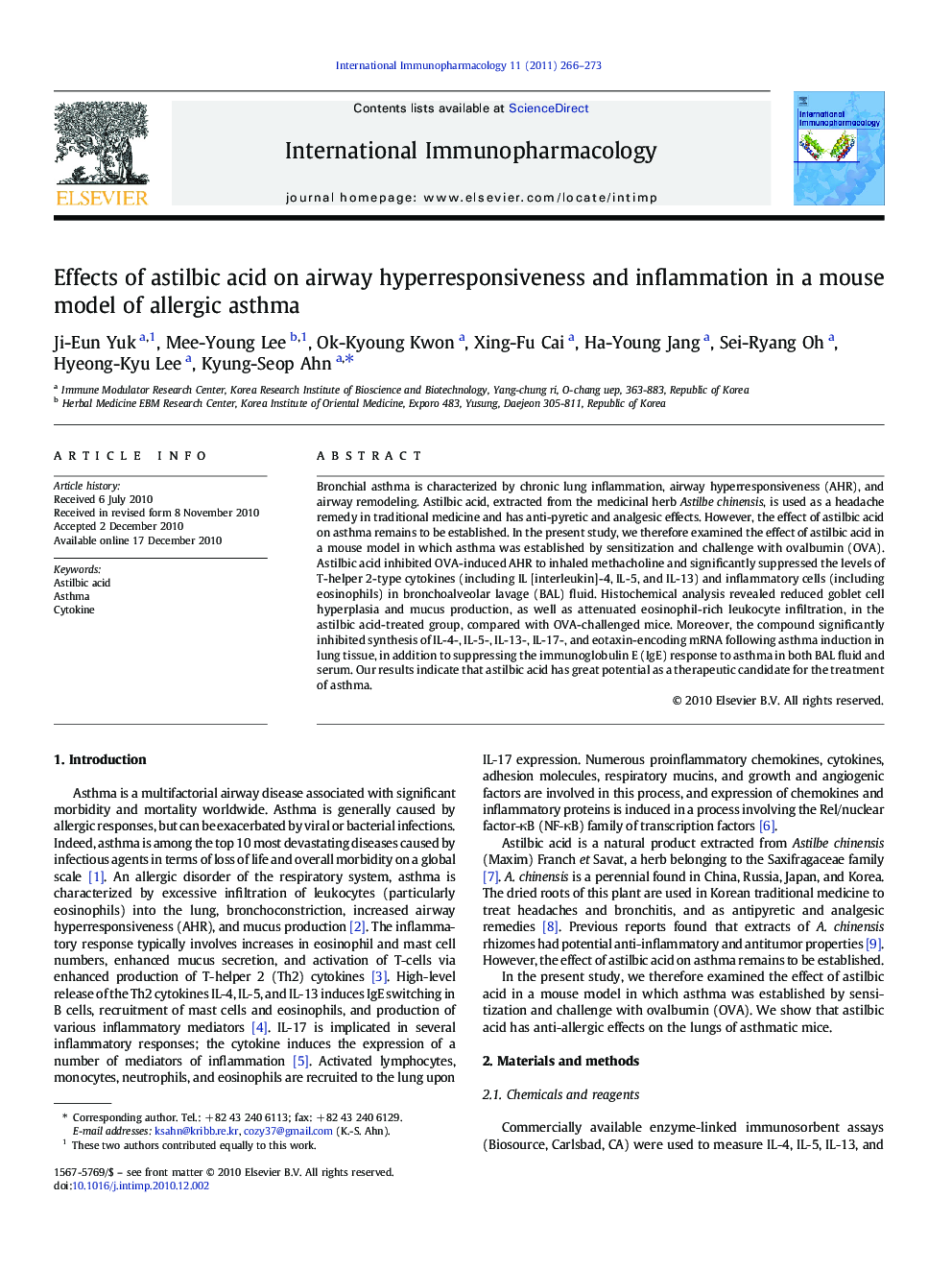| Article ID | Journal | Published Year | Pages | File Type |
|---|---|---|---|---|
| 5834090 | International Immunopharmacology | 2011 | 8 Pages |
Bronchial asthma is characterized by chronic lung inflammation, airway hyperresponsiveness (AHR), and airway remodeling. Astilbic acid, extracted from the medicinal herb Astilbe chinensis, is used as a headache remedy in traditional medicine and has anti-pyretic and analgesic effects. However, the effect of astilbic acid on asthma remains to be established. In the present study, we therefore examined the effect of astilbic acid in a mouse model in which asthma was established by sensitization and challenge with ovalbumin (OVA). Astilbic acid inhibited OVA-induced AHR to inhaled methacholine and significantly suppressed the levels of T-helper 2-type cytokines (including IL [interleukin]-4, IL-5, and IL-13) and inflammatory cells (including eosinophils) in bronchoalveolar lavage (BAL) fluid. Histochemical analysis revealed reduced goblet cell hyperplasia and mucus production, as well as attenuated eosinophil-rich leukocyte infiltration, in the astilbic acid-treated group, compared with OVA-challenged mice. Moreover, the compound significantly inhibited synthesis of IL-4-, IL-5-, IL-13-, IL-17-, and eotaxin-encoding mRNA following asthma induction in lung tissue, in addition to suppressing the immunoglobulin E (IgE) response to asthma in both BAL fluid and serum. Our results indicate that astilbic acid has great potential as a therapeutic candidate for the treatment of asthma.
